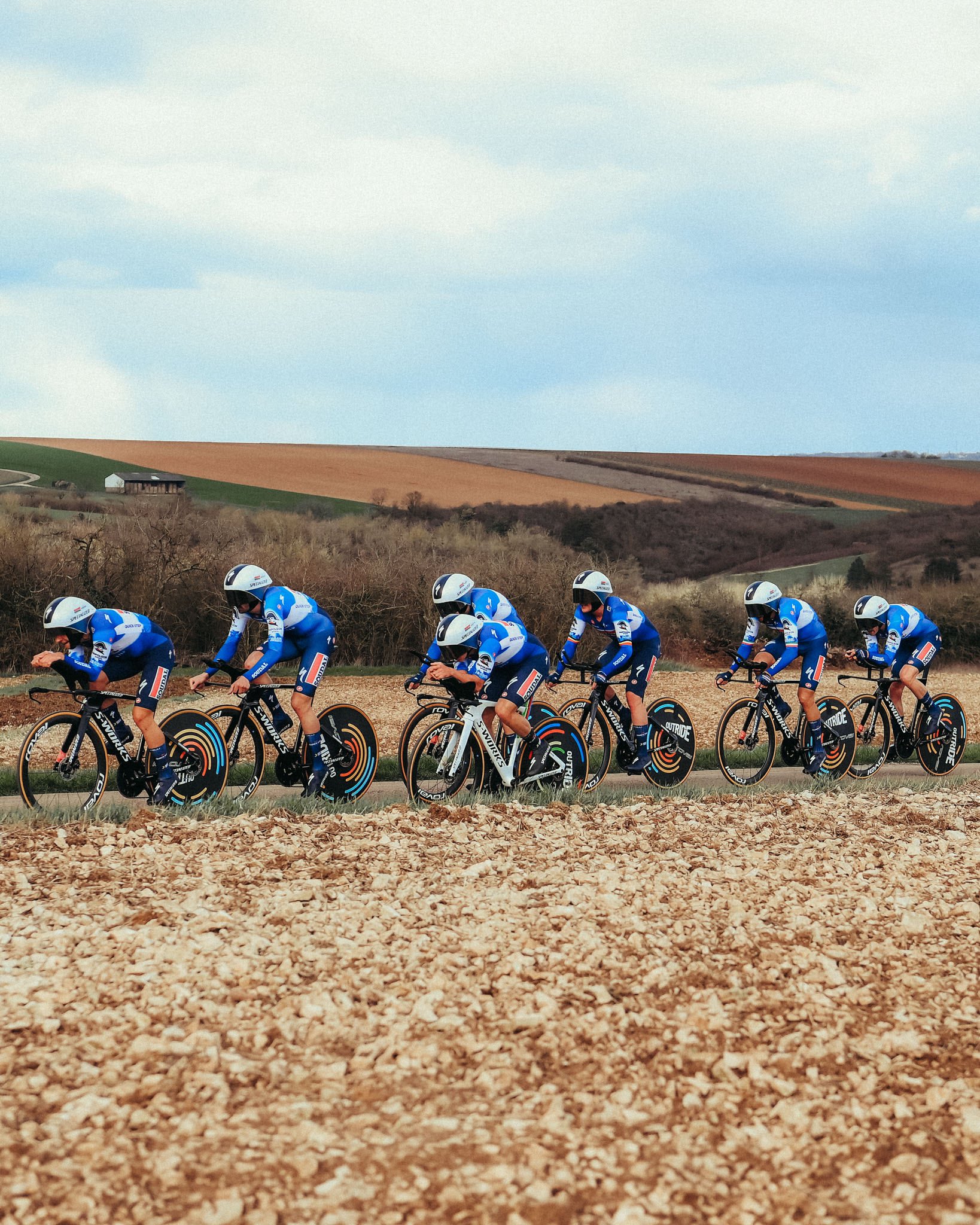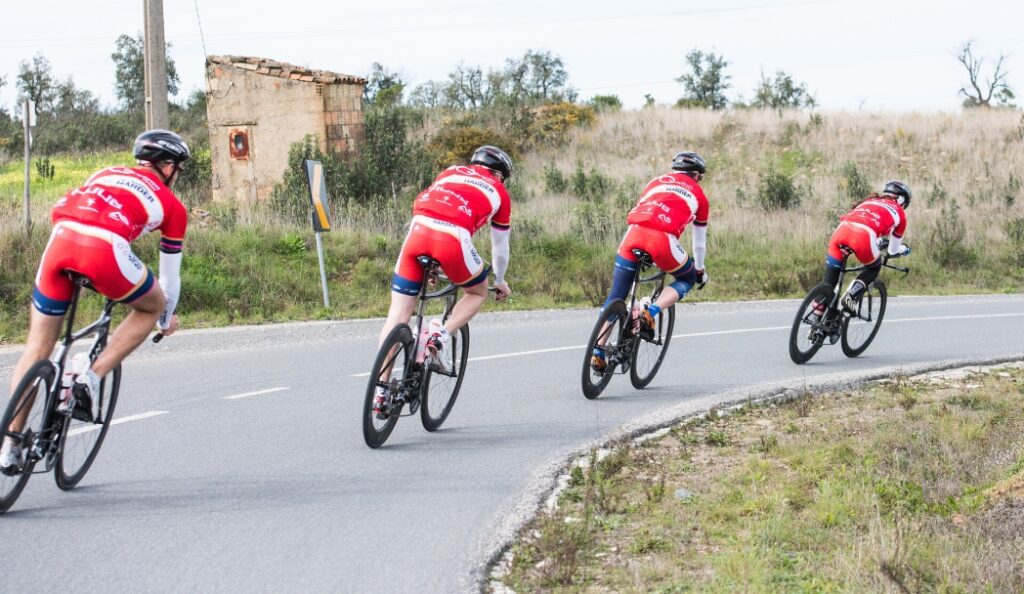Cycling races work by pitting riders against each other in a competition to be the first to cross the finish line. Cycling races are thrilling events that showcase the incredible athleticism and skill of the participants.
These races typically involve a group of cyclists who compete against each other over a predetermined distance or time. Whether it’s a one-day race or a multi-stage event, riders strive to finish ahead of their competitors. They often race on varied terrain, such as flat roads, hilly mountains, or even cobblestones, adding more excitement and challenge to the event.
Along the course, there are intermediate sprint sections and designated segments where the riders can earn points or time bonuses. The race winner is determined based on the time taken to complete the course, with the victorious cyclist awarded the coveted title and often the honor of wearing the leader’s jersey. Cycling races captivate fans worldwide with their intensity, strategy, and thrilling sprint finishes.
The Basics Of Cycling Races
In cycling races, riders compete in various formats such as individual time trials and mass start races.
Cycling races are divided into categories based on skill level and age groups to ensure fair competition.


Credit: styrkr.com
Race Formats
Understanding the different race formats in cycling is crucial for both participants and spectators. Each type offers a unique challenge and requires specific strategies to excel. Let’s delve into the three main race formats:
Road Races
Road races are one of the most common and traditional forms of cycling competitions. These races typically take place on public roads and vary in length from shorter circuits to long distance point-to-point routes. Riders compete in a peloton, a large group that navigates through challenging terrain including climbs, descents, and flats. Points are awarded for intermediate sprints and reaching the finish line first.
Time Trials
Time trials are an individual race against the clock. In these races, cyclists set off one by one at regular intervals to complete a set course. The goal is to achieve the fastest time possible without the drafting assistance of others. Riders must pace themselves efficiently and maintain a steady rhythm to maximize speed and performance.
Criteriums
Criteriums, often called crit races, are dynamic and fast-paced events held in urban settings on short, closed-loop circuits. These races feature multiple laps around a course, which can include sharp turns, narrow roads, and fast straightaways. Spectators can witness the action up close as riders jockey for position, strategize for prime sprints, and aim for victory.
Race Categories
Race categories in cycling are divided into two main types: Professional Races and Amateur Races.
Professional Races
In professional cycling races, participants are elite athletes who compete at the highest level of the sport. These races often feature the most challenging courses, with riders racing for prestigious titles and significant prize money. Professional races are governed by international cycling federations and require riders to meet strict qualification criteria to participate.
Amateur Races
Amateur cycling races cater to a broader range of participants, from recreational riders to those aspiring to turn professional. These races provide an opportunity for cyclists to test their skills and compete in a more relaxed environment. Amateur races are typically categorized by skill level and experience, allowing riders to progress through the ranks as they improve their performance.
Key Elements Of Cycling Races
When it comes to cycling races, there are three key elements that make them exciting and captivating: the peloton, breakaways, and sprints. These elements play a crucial role in determining the outcome of the race and keeping spectators on the edge of their seats.
Peloton
A peloton is a large group of riders who cycle closely together in a pack. It is formed at the start of the race and remains the main group throughout the race. The peloton showcases the unity and teamwork of the riders as they work together to maintain a high pace. Riding in a peloton provides several advantages, such as reduced wind resistance and increased drafting opportunities.
Breakaways
Breakaways are instances when one or more riders decide to break free from the rest of the peloton and ride ahead. These moves require immense stamina and strategic planning. Riders in a breakaway aim to gain an advantage over the peloton by creating distance and forcing the other riders to work harder to catch up. Breakaways often occur on challenging terrain or during critical points in the race.
Sprints
Sprints are short bursts of speed where riders compete to reach the finish line first. These intense moments often take place at the end of a race or at specific intermediate points designated as sprint sections. Sprinters, known for their explosive power, use their strength and agility to outpace their competitors and secure a stage win or points classification. Winning a sprint requires a combination of skill, timing, and sheer determination.
Strategies And Tactics
In cycling races, strategies and tactics play a crucial role in determining the outcome of the race. These aspects are essential for cyclists to outmaneuver their opponents, conserve energy, and ultimately secure a competitive advantage. Understanding the various strategies and tactics employed during cycling races can provide valuable insights into the sport’s dynamics and the intricacies of race management.
Drafting
Drafting involves closely following the cyclist in front to reduce wind resistance. This technique allows riders to conserve energy by riding in the slipstream of the leading cyclist. Efficient drafting is pivotal in long-distance races as it enables cyclists to maintain higher speeds with less effort. Cyclists strategically take turns leading the pack to share the burden of breaking through the wind, maximizing their drafting advantage.
Attacking And Counterattacking
Attacking is a sudden burst of speed by a cyclist to break away from the main group and create a gap. This aggressive move aims to gain a tactical advantage by distancing oneself from competitors. Conversely, counterattacking involves swift responses from other riders to bridge the gap and nullify the attacking rider’s advantage. These tactical maneuvers contribute to the dynamic nature of cycling races, keeping participants constantly alert and responsive to changes in the race dynamics.
Role Of Teams And Teamwork
Cycling races require teams and teamwork, with each team working together to support their lead rider and execute strategies to win the race. By collaborating and coordinating their efforts, teams can improve their chances of success in competitive cycling events.
Team Dynamics
Team dynamics play a crucial role in the success of cycling races. Cycling teams are comprised of a group of riders who work together to achieve a common goal. Each team member has a specific role and contributes to the overall strategy. The interplay between individual riders, team leaders, and support riders is what makes cycling races a true display of teamwork and cooperation.
Lead-out Train
One key aspect of team dynamics in cycling races is the concept of the lead-out train. The lead-out train refers to a strategic formation in which the teammates form a line in front of their designated team leader. This formation acts as a shield against wind resistance, allowing the team leader to conserve energy for the final sprint. In a lead-out train, the teammates take turns at the front, known as the “pull,” while the team leader stays in their slipstream. This rotation ensures that no single rider becomes exhausted, enabling the team to maintain a high speed throughout the race.
Teamwork In Action
To understand the impact of teamwork in cycling races, let’s break down the role of each team member within the lead-out train:
1. The Sprinter: The team leader, usually a sprinter with exceptional speed, has the primary goal of crossing the finish line first. They rely on their teammates to set the stage for their final sprint.
2. The Lead-out Riders: These teammates position themselves at the front of the pack, shielding the sprinter from wind resistance. Their objective is to create a smooth, fast pace that suits the team leader’s strengths.
3. The Support Riders: While the lead-out riders set the initial pace, support riders are responsible for maintaining it. They anticipate and neutralize any attacks from rival teams, ensuring the lead-out train remains intact.
4. The Domestiques: Domestiques, often unsung heroes, sacrifice their own chances of victory to support the team leader. They help with tasks like fetching water bottles or initiating breakaways, strategically diverting the attention of rival teams. By understanding their roles and working together seamlessly, cycling teams can maximize their chances of success. Teamwork ensures that the strongest rider in the team crosses the finish line first, ultimately leading to victory for the entire team. In conclusion, cycling races are not merely individual efforts; they rely heavily on teams and teamwork. The strategic formation of a lead-out train, with its rotation of pullers and the protection it offers to the team leader, showcases the importance of team dynamics in achieving race goals. Each team member has a unique role to play, contributing to the overall strategy and success of their team.
Race Day Logistics
On race day, several essential elements contribute to the smooth execution of a cycling event. From race preparation to support vehicles, each aspect plays a crucial role in ensuring the success of the race.
Race Preparation
- Riders arrive early at the starting point.
- Check in and receive their race numbers.
- Warm up to prep their muscles.
Support Vehicles
Support vehicles following the cyclists provide assistance and necessary supplies throughout the race.
- Carry extra gear like water bottles and tools.
- Offer mechanical support if a bike breaks down.
- Provide medical support in case of injuries.


Credit: twitter.com
Safety Measures And Regulations
When it comes to cycling races, safety measures, and regulations are of utmost importance to ensure the well-being of both participants and spectators.
Rules And Regulations
Cycling races follow strict rules and regulations to enhance safety on the road.
Safety Gear
Participants are required to wear protective gear such as helmets, gloves, and knee pads.
- Helmets are mandatory to protect the head from potential injuries.
- Gloves provide a better grip on the handlebars and cushion the hands during long rides.
Knee pads offer extra protection in case of falls or accidents during the race.
Regulations
Strict regulations are in place to prevent accidents and maintain fair competition.
- Speed limits are enforced to ensure the safety of all participants.
- Obeying traffic laws is crucial to prevent collisions with vehicles on the road.
Frequently Asked Questions
How Does A Bicycle Race Work?
A bicycle race works by cyclists competing to be the fastest to complete a set course. It involves tactics, teamwork, and physical endurance. Riders aim to cross the finish line first to win the race. The race may be a single stage or several stages in a multi-day event.
How Do You Win A Cycling Race?
To win a cycling race, train consistently, focus on strength and endurance, strategize your tactics, stay mentally tough, and give your best effort.
How Does A 24 Hour Bike Race Work?
In a 24-hour bike race, participants ride continuously for a full day. The goal is to complete as many laps as possible within the time limit. Riders can rest or switch out with teammates to keep going. The winner is the team or individual with the most laps.
How Do Cycling Categories Work?
Cycling categories determine skill levels and competition in races. They categorize riders based on experience and ability.
Conclusion
To sum up, understanding the intricacies of cycling races provides insight into the world of competitive cycling. With its unique strategies and tactics, the sport offers an exhilarating experience for both participants and spectators alike. As you delve deeper into the dynamics of cycling races, you gain a newfound appreciation for the athleticism and teamwork required to succeed in this thrilling sport.



